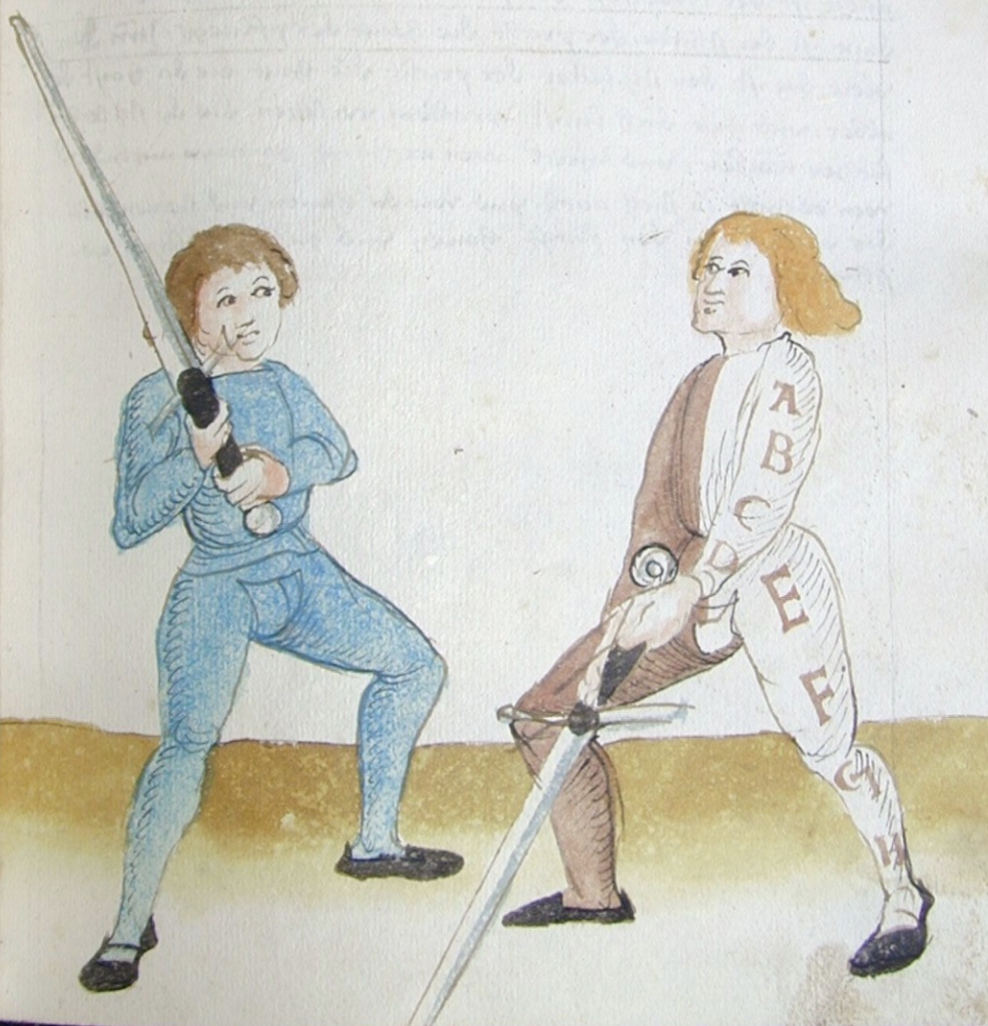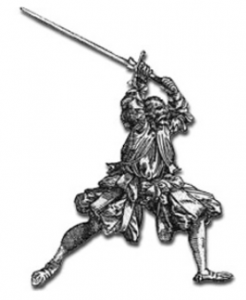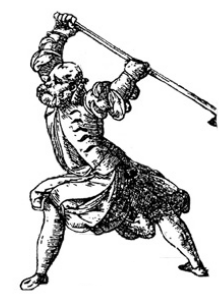Vom tag
Contents |
From the Day/Roof
15th Century
The high guard is one of the Vier Leger described in the Liechtenauer tradition. The Vom Tag position in these styles is somewhat vaguer than the 16th century variant, and can be held on the shoulder, at the ear, or above the head. The hands are almost universally held well back, this provides a ready position suited to cutting from above, and keeps them out of harms way.
The guard of Vom Tag is 'broken' by the Zwerchau as described in the Vier Versetzen.
A typical Vom Tag position is seen by the fencer on the left, below:
16th Century
Longsword
Vom tag is one of the four principal guards named by Meyer. It is a classic starting transitional position for cuts from above. In this guard the posture is forward weighted and the hands are held high overhead either directly over the centre-line, or just to the left or right of it as the situation dictates. The elbows are held well out and you can just see the pommel in your upper peripheral vision. The guard can be performed with the left or right foot forward.
One piece of advice for the vom tag guard is that you should allow sufficient clearance to ensure that the crossguard clears your scalp during cuts.
Polearm
Staff Vom Tag [non canonical name]
Often with a polearm we'll go overhead as shown in the illustration. While this is not named directly in the text, it is shown in the plates. This readiness for an overhead strike is similar to Vom tag with the longsword, and so we will refer to it as such in the text.


